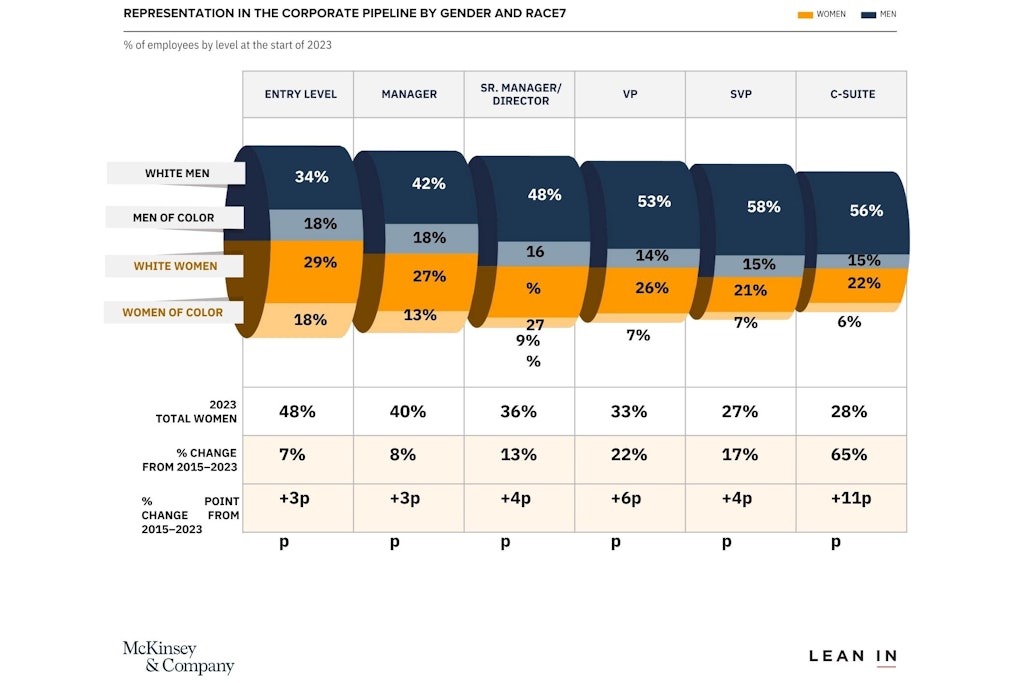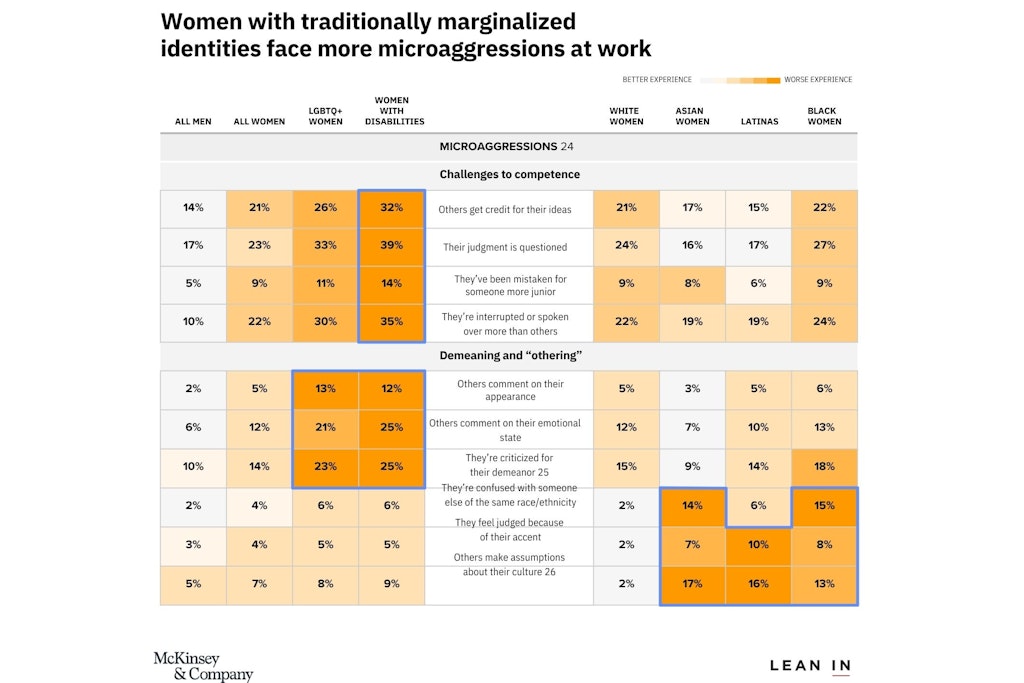Corporate myths still impact women despite increasing leadership representation
Last updated on 8 March 2024

A major American Women in the Workplace report has dug deep into the corporate pipeline to debunk key myths about women’s workplace experiences, highlighting the good and not-so-good trends in leadership and representation. Although the data is from the other side of the world, it shines a light on important issues for workplaces here in Australia.
Key points
- Since 2015, there has been a 65% increase in the number of women holding C-suite positions, although the total figure still stands at 28% compared to 72% for men
- The report references the “Great Breakup” where women are dropping out of the corporate pipeline with decreasing percentages of women in management (40%) and senior management (36%)
- The figures are even lower for women from diverse backgrounds even when compared directly to their male counterparts: representation drops by two-thirds for women of colour as they progress in the corporate pipeline
Career ambitions have not changed
While the report found that fewer women than men are progressing into leadership positions, it stated that’s not due to a lack of ambition. In fact, ambition is increasing as nine in ten wanted to be promoted to the next level and three in four women hoped to become senior leaders.
There is also equal commitment between personal and professional lives as women are taking more steps to prioritise personal lives without compromising on career goals. It’s not just women, though, as 60% of men are putting time into their personal lives to ensure they have a good balance between family time and work.
“The house is crazy. A dog, four kids, a wife. Being able to juggle all that is going on in the personal life by having flexibility at work is extremely important. It leads to a healthy balance from my perspective between work and personal life,” explained one respondent, a father and director.
Flexibility has proven to be a critical asset here as hybrid or remote work models have allowed women to avoid reducing their work hours or changing roles.
“Flexible work has made me more productive because I can build work around whatever I’ve got going on with my personal life,” added another respondent, a mother and director who works remotely.
The first hurdle is the hardest to overcome
The glass ceiling is a term synonymous with leadership barriers for women; the invisible barrier has long been viewed as the biggest obstacle to overcome. However, Women in the Workplace now view a “broken rung” as the biggest hurdle. Often it’s the very first one.

For every 100 men promoted from an entry level role, 87 women were promoted. Unfair bias is deemed to be one of the main reasons for this as the report explained that women are typically hired and promoted on past accomplishments while men are hired or promoted based on future potential.
“Because women early in their careers have shorter track records and similar work experiences relative to their men peers, performance bias can especially disadvantage them at the first promotion to manager,” claimed the report.
The gender gap that forms after entry level roles then sets the tone for career progression from management through to C-suite positions. It’s imperative that bias is removed to allow for equal opportunities and career progression from the start.
Microaggressions have a lasting impact
While microaggressions are seemingly small slights that may seem inconsequential to some, the hostile behaviour often has a negative impact on women’s careers and health. The report highlighted that women experience microaggressions at a higher rate than men, which can include regularly being interrupted at work or having their emotional state commented on.
These demeaning and dismissive actions have resulted in 78% of women self-shielding at work: they adjust the way they look and act to protect themselves. Examples include no longer speaking up or sharing opinions with colleagues who have previously made disparaging remarks.

Microaggressions can have a long lasting effect on women and their career opportunities. Women who experience microaggressions and self-shield are:
- Four times more likely to feel burnt out
- Three times more likely to to consider leaving the company
- Prone to feeling invisible or ignored at work, particularly when it comes to personal achievements being recognised
- More likely to be overlooked or stereotyped based on their cultural or linguistic background
- Two-and-a-half times more likely to change their appearance to be deemed as more professional when they identify as LGBTQ+
“I had an experience with a boss… being painted as sassy, feisty, or rude. I feel like I have to be so careful about how I’m doing here – about what I’m doing here – because I just feel like I’m really going to get mischaracterised if I’m not careful with my words,” expressed a trans woman respondent.
The report recommends that employers create a culture where it’s normal to address microaggressions as they occur with no fear of having difficult conversations. Challenging the pervasive comments would be one step toward overcoming workplace bias preventing women from progressing, while creating an all-round positive workplace culture where diversity is supported.